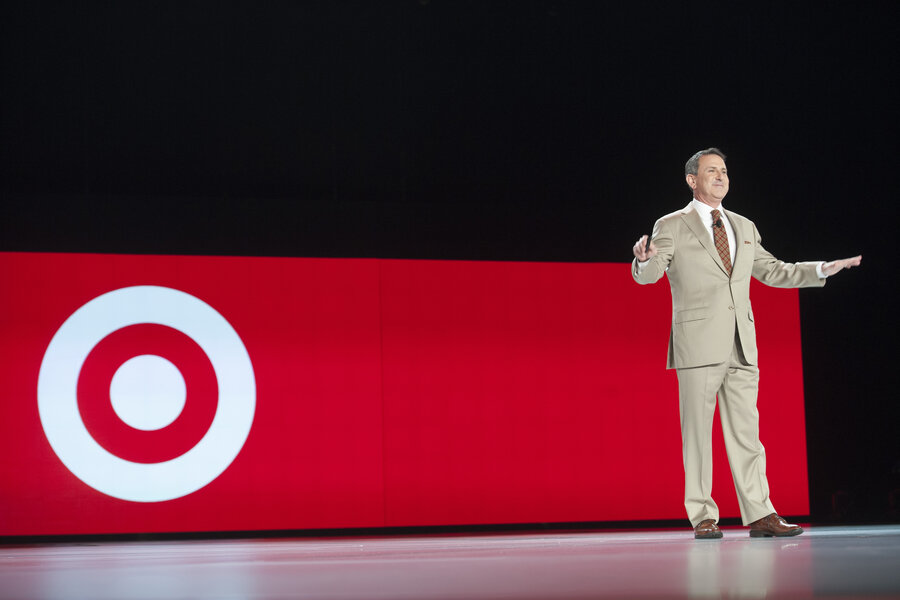Target experiments with gender neutrality in its stores
Gender cues have vanished from some of Target’s children’s aisles and the store is now carrying new product lines that cater to gender-fluid themes. It's all part of a societal shift that has some chain retailers wondering how to keep traditional consumers comfortable even as they accommodate a growing interest in gender-neutral shopping environments.
Last year, Target instituted gender-free toy labeling and bedding areas. Now the chain is carrying a new kids’ home decor line, Pillowfort, that offers a gender-neutral array of children’s bedding that will become available later this month. This is part of a complete image flip for the retailer’s children’s line.
“It was an aisle of pink, fairy princesses, ponies, and flowers,” Julie Guggemos, Target’s senior vice president of design and product development told the Minneapolis Star Tribune. “And for the boys it was rockets and dinosaurs. Well, you know what? Girls like rockets and basketball. And boys like ponies.”
For retailers, it means a willingness to rethink some long-standing practices. “Stereotypes of race, age and particularly gender are giving way to a new freedom of expression,” Doug Stephens, founder of Retail Prophet, writes in an email.
Among other changes, Mr. Stephens suggests, the gender-neutral movement may encourage better design. "Once you strip out gender, an item has to stand on its own design quality and merits,” he writes.
Some members of the LGBT community have been quick to support Target’s decision.
“I’m glad to see this happen,” says Joni Stacy, president of the Omaha chapter of PFLAG and a national board member. “The distinct binary system really doesn’t fit everyone and doesn’t leave room for expression. If you take a room full of kiddos, you’re going to find a lot boys that like pink and girls who like blue.”
But for some LGBT advocates, the move toward gender-neutral products is just a first step in the right direction. “We applaud Target for this great initiative," writes Sylvain Bruni, president of Boston Pride, in an email. "It allows kids to develop gender identities at their own pace, rather than having them being imposed. As importantly, it helps to foster inclusiveness for the trans community.”
That's not to say that steps like those taken at Target necessarily go far enough for advocates like Mr. Bruni. “There is a lot more that the retail community can do to support these concerns," he says. His list of desired changes for retailers includes "installing gender neutral bathrooms in their facilities (for both customers and staff), implementing sensitivity training for staff about the LGBT community, instituting employment benefits for trans staff, ensuring equal pay for equal work, and raising the minimum wage.”
Not all retailers, however, are interested in making broad-based changes when it comes to gender-neutral marketing. In Britain, Selfridges & Co’s experimented with a gender-neutral section for six weeks last year. Selfridges now has a gender-neutral online section, called Agender, but the section is not listed on the website’s main navigational bar.
Agender was created last year within Selfridges retail store and both drew consumer accolades and media attention. Yet there is no gender-neutral section in the physical store now and no immediate plan to create one, a Selfridges spokesperson says in a phone interview from the retailer's London headquarters.
“We noticed women shopping menswear and men shopping womenswear and thought was something really, really interesting,” the spokesperson says. “Also, across the international runway schedule we saw menswear collections and womenswear collections being shown together, so it felt like there was a movement towards gender-fluidity and again to see gender at a really different way.”
She adds, “It was an experiment. It went really, really well. It was the most engaged fashion project in recent history, so in the past 10 years.”
The store removed all gender directives such as signs, colors, and male or female mannequins and presented unisex collections, the spokesperson adds.
So why not just create a permanent gender-neutral space?
“It can be really, really challenging in a store environment,” the spokesperson says. “I guess department stores are all about orientation. They’re all about ease and being able to find what you want in a way that is pleasurable and makes things easy for you. Some customers want gender neutral while others want menswear, womenswear, children's wear, and kitchen wear. Our goal is to make everyone comfortable at Selfridges.”
And of course, for retailers, pleasing the customer is what it's all about. "While retailers may position themselves to define gender gaps, ultimately it's the consumers who make their own choices," writes Nicole Leinbach Reyhle, founder of RetailMinded.com and author of "Retail 101: The Guide to Managing and Marketing Your Business in an email.
"Change in any business environment – including retail – can introduce problems or rewards. With many consumers wanting this type of change – which is why Target likely made this move – I believe it will be to their advantage,” writes Ms. Reyhle. “Certainly the media attention they are gaining from it won't hurt."









